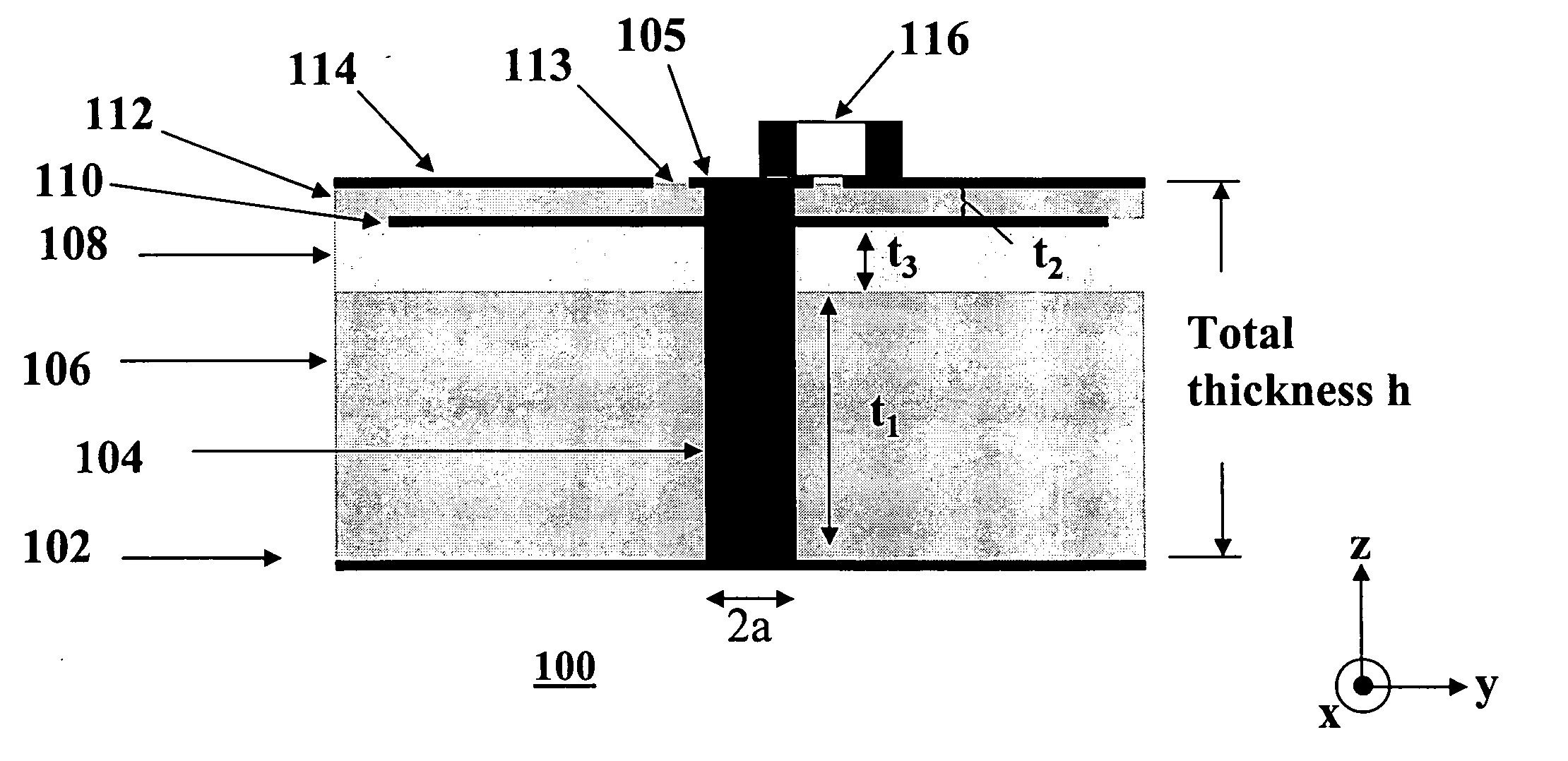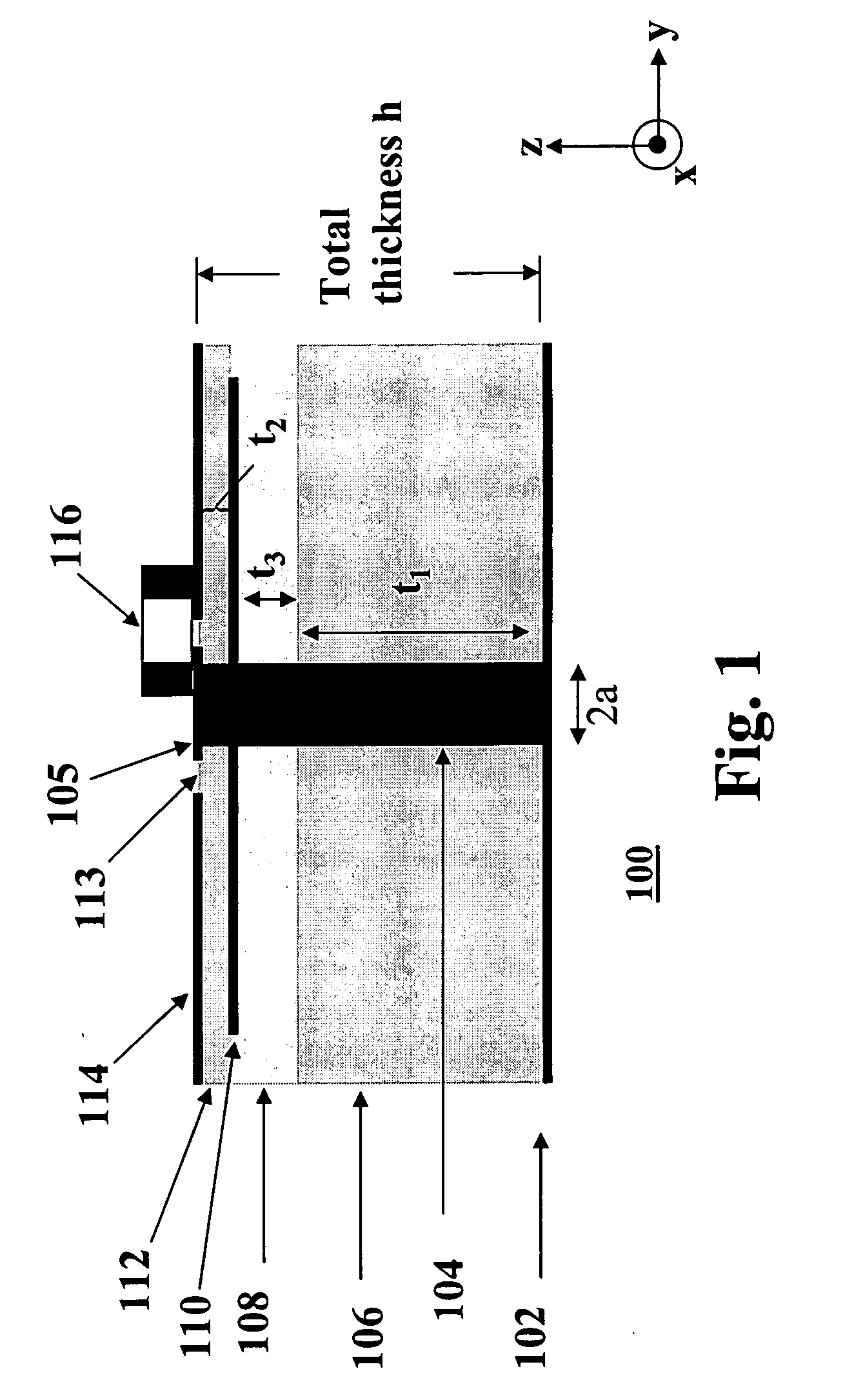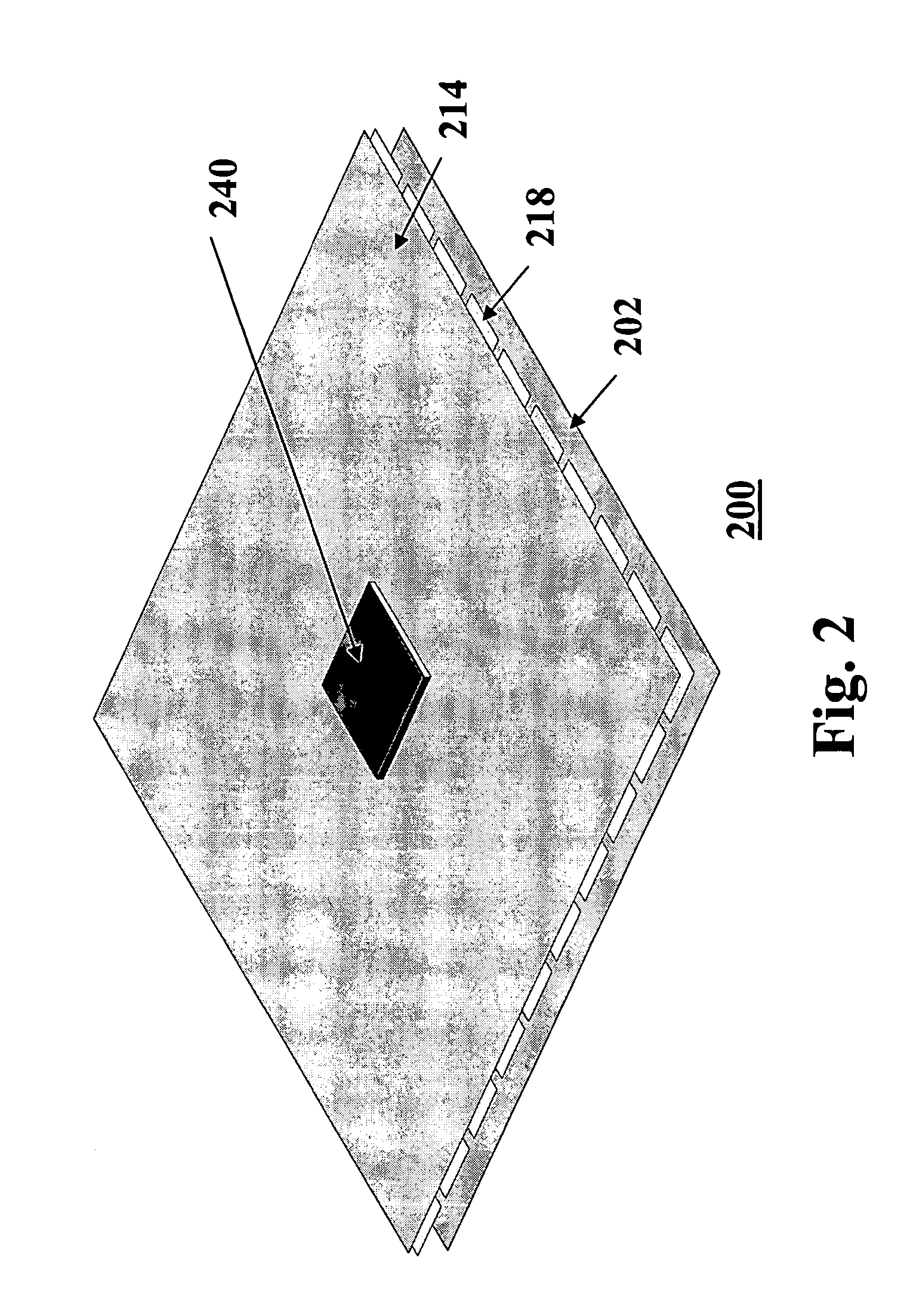Circuit and method for broadband switching noise suppression in multilayer printed circuit boards using localized lattice structures
a multi-layer printed circuit board and broadband switching technology, applied in cross-talk/noise/interference reduction, printed capacitor incorporation, printed element electric connection formation, etc., can solve the problems of l(di/dt) noise that can be substantial, power plane noise induced in the power distribution system, power plane noise induced in the ground plane, etc., to achieve the effect of suppressing digital noise on the power plane, eliminating power plane resonance, and improving rf isolation
- Summary
- Abstract
- Description
- Claims
- Application Information
AI Technical Summary
Benefits of technology
Problems solved by technology
Method used
Image
Examples
first embodiment
[0041] Referring now to the drawings, FIG. 1 illustrates a parallel plate waveguide (PPW) 100 containing a transverse electromagnetic (TEM) mode suppression circuit. FIG. 1 is a cross-sectional view of the PPW 100. The PPW 100 includes a lower metal layer 102, an upper metal layer 114 separated by three dielectric regions. An array of conductive rods 104 of length h and radius a extends through all three dielectric layers from lower metal layer 102 to the upper metal layer 114. A bonding film 108 of thickness t3 is disposed between the first dielectric layer 106 of thickness t1 and the second dielectric layer 112 of thickness t2. Buried patches are contained in a third metal layer 110 between the second dielectric layer 112 and the third dielectric layer 108 which is the bonding film and make contact with the vias 104. Unless otherwise noted, the dimensions shown in the figures do not include the thickness of the conductive surfaces, which may be a relatively thin metal. The conduct...
embodiment 326
[0051] Patches can completely surround an open central region and change in size with distance from the central region. Inhomogeneous mode suppression structures may be created to allow broader frequency stopbands between two different reference plane locations on the same PCB. In these structures, the stopband edges vary in frequency as a function of lateral position within the PCB because the properties of the unit cell change with location. One example of such a structure is shown in embodiment 326 of FIG. 3. In this embodiment, the patches decrease in size from the central region 332. The array of patches contains larger patches 334, and smaller patches 336. As mentioned, these different patch and unit cell sizes attenuate the electromagnetic waves within different frequency regions. Although only 2 unit cells of each type of patch are shown, more unit cells or fewer unit cells may be present. In addition, although the patch size shown in FIG. 3 decreases with increasing distanc...
embodiment 322
[0070] Now we turn to experimental results of localized arrays of patches and capacitors. Experiments were performed to test the actual frequency response of different types of arrangements: those in which the arrays of patches and / or chip capacitors extend throughout the PCB and those with localized arrays. A top view of a parallel plate waveguide with 5×5 arrays of buried patches around ports 2 and 3 is shown in FIG. 16. Pads are available for SMT capacitors to be mounted. However, there are no SMT capacitors mounted on the board in this figure. The PCB is of dimensions 4.25 inches by 5.25 inches. The patches are squares having 230 mils side dimension and a spacing of 20 mils between the patches. The stackup of this board is the same as that shown in FIG. 1. The dielectric layer between the patches and the bottom layer is 24 mils thick and has a relative dielectric constant of 2.5, the dielectric layer between the patches and the top layer is 3 mils thick and has a relative dielec...
PUM
 Login to View More
Login to View More Abstract
Description
Claims
Application Information
 Login to View More
Login to View More - R&D
- Intellectual Property
- Life Sciences
- Materials
- Tech Scout
- Unparalleled Data Quality
- Higher Quality Content
- 60% Fewer Hallucinations
Browse by: Latest US Patents, China's latest patents, Technical Efficacy Thesaurus, Application Domain, Technology Topic, Popular Technical Reports.
© 2025 PatSnap. All rights reserved.Legal|Privacy policy|Modern Slavery Act Transparency Statement|Sitemap|About US| Contact US: help@patsnap.com



